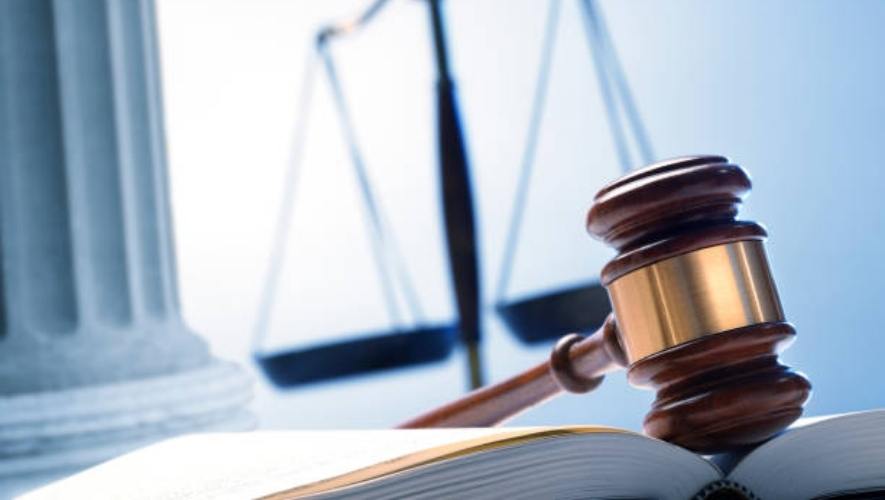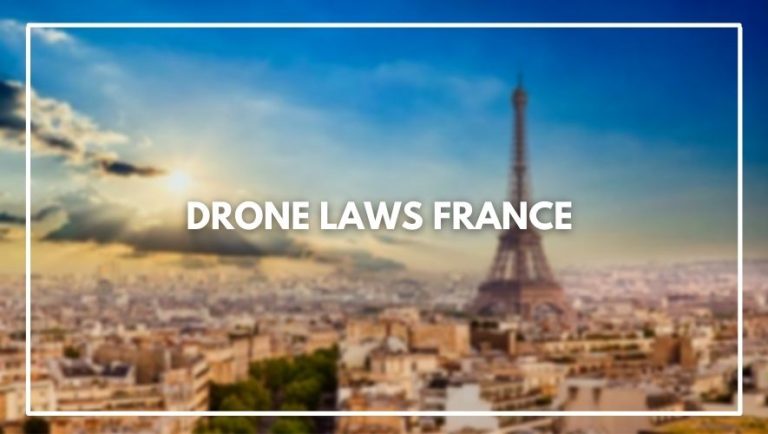Drone laws Malta are very strict. The drone laws Malta are very different from place to place and this article is going to cover everything that you need to know about drone laws in Malta.
If you’re thinking of purchasing a drone, whether it be a DJI Mavic, or a Phantom 4 Pro, more and more people are getting drones as gifts because they’re just incredible products.
Drone Laws Malta has become a hot topic recently in the country, with the government investing funds into building a drone integration system. There are several other laws associated with drone laws Malta, including commercial drone law Malta and recreational drone law Malta.
Drone Laws In Malta

Malta Drone Laws And Regulations
Malta drone laws and regulations
Below is a list of the most important drone laws in Malta:
- You need to register your drone with the CAA if it weighs between 250 grams and 7 kilograms.
- You can use a drone up to 50 meters above ground level as long as you keep it within sight at all times and don’t fly over groups of people or buildings without permission from the owner.
- Drones must not be flown within 150 meters of any airport, heliport, military base or other restricted airspace without permission from Air Traffic Control (ATC). In addition, there are certain areas where drones cannot be flown; these include: national parks; nature reserves; beaches; public roads; ports and harbors (without special permission).
Registration
You must register your drone with the Civil Aviation Directorate (CAD). You will need to be 16 years old to apply for a certificate of registration. It is free to register your drone with CAD.
What The Law Says About Drones And Airspace
Malta has strict regulations regarding the use of drones. In order to operate a drone in Malta, you must have a license and register your drone with the Civil Aviation Authority.
If you plan to fly beyond visual line of sight (BVLOS), or over 400 feet (120 meters) above ground level, make sure that you have applied for the appropriate permissions beforehand.
According to Maltese law, it is illegal for anyone under 16 years of age to fly a drone without supervision by someone aged 16 or older who can provide them with proper instruction.
Children between 8-15 years old may only fly drones under adult supervision if they are taking part in an official competition or event approved by the CAA
Airspace Under 400ft Is No-fly Zone For Drones.
You also need to be aware that flying drones under 400ft is against the law. The reason for this is to avoid a collision with aircraft, but in practice, it means that you must be able to see your drone at all times and in all directions when flying.
If your drone flies above 400ft and enters airspace controlled by Malta International Airport or another organization authorized by the Civil Aviation Authority (CAA), then you could face prosecution by the CAA if they find you are responsible for doing so.
Additionally, should your drone weigh more than 7kgs or has any kind of camera attached (including cameras on phones or tablets) then you will need a permit before taking off.
This requirement extends not just to private individuals – commercial operators are also required to apply for an operating license from CAA before operating their drones commercially within Maltese airspace!
Drones also cannot operate over people or large crowds – any such activity would require special permission from CAA first!
Drones May Not Be Flown Within 3km Of Any Airport
If you are a certified drone operator, you may fly within 3km of an airport. The definition of 3km is a circle around the airport with the centre on the runway and its radius three kilometres.
If you are not a certified drone operator, but are flying under 400 feet and within visual line of sight (VLOS), then you must follow local laws.
These laws vary from country to country so it’s important to check with your local government before flying anywhere near an airport.
Drones May Not Be Flown Beyond Visual Line Of Sight
You will need to have a license for flying your drone beyond visual line of sight. The Civil Aviation Directorate of Malta has already approved certain drone operators who have applied for this license. To apply for the license, you must fill out this form, which can be found on the Civil Aviation Directorate website.
All drone operators are required by law to report incidents involving drones or other unmanned aircraft systems (UAS) that occur within Maltese airspace directly to both the Maltese government and local air traffic control authorities.
Drones May Not Buzz People
Drones may not:
- Buzz people or cause nuisance through noise or other means.
- Be flown within 3km of any airport including heliports and military air bases. Exceptions are made if the drone is being used for a legitimate purpose, such as in case of an emergency rescue operation by the Malta Civil Aviation Authority (MCAA).
- Fly beyond visual line of sight unless it is flown with an approved drone operator who holds a license to fly beyond visual line of sight.
Taking Photographs Or Filming People
The law concerning taking photographs or filming people in private places is very clear. It is forbidden to take photos or film anyone in private places such as their home, garden or other private property without their permission.
If you fly your drone over someone’s house, you could cause distress to the occupants and they could even sue you if they feel that this has affected them negatively.
General Rules And Tips For Flying Safely In Malta
- Avoid flying over large gatherings of people. This can include sporting events, festivals, protests and other public gatherings.
- Avoid flying near emergency response situations (e.g., fires).
- Avoid flying in restricted airspace. Drones are not allowed anywhere around Malta International Airport or at any of its approaches, including the Grand Harbor area and all waters nearby to the airport itself.
- The aircraft must not be operated within 5 nautical miles from any airport without permission from air traffic control; this is known as a Temporary Flight Restriction (TFR).
- Only certified operators who hold a valid license may apply for permission to fly in an active TFR area; general recreational users cannot do so.
- Avoid flying near airports with small drones (less than 55 pounds max takeoff weight) unless you’ve been given permission by air traffic control.
- Avoid high winds when operating your drone – high wind speeds could cause it to crash against buildings or trees while being controlled by someone on the ground.
- If possible, do not fly your drone at night because it’s harder for others to see it coming towards them!
Know Your Local Laws Before You Go Flying!
Before you go flying, it’s important to know your local laws and regulations. To help you get started, we’ve compiled a few resources that will help ensure that you have a safe and positive experience on the ground and in the air.
- Check air traffic control and airport websites for information about local airspace
- Find out about local airspace: find out how much space is available above your location and whether or not there are any “no-fly” zones near you.
- Check no-fly zone lists: Look up areas where drones are prohibited or restricted by law, such as military bases and hospitals. If there isn’t a specific list of prohibited airspace online, contact your local authorities to see what they suggest as best practice when flying in certain areas (if they’ve got any suggestions at all).
How To Register Drone In Malta

Drone Registration Malta
To register your drone in Malta, visit the Drone Registration Malta website. Fill out the form and submit it to receive your certificate.
Keep this certificate with you when flying your drone so that police officers can verify that you are a registered owner of drones and not an unregistered user who is breaking the law.
What Is The Process Of Drone Registration?
You can register your drone with the Malta Civil Aviation Authority (MCA). There is no fee for registering a drone. You need to:
- Provide your contact details and a copy of your drone’s registration certificate (if applicable)
- Understand that you will be required to provide updated information should it change within 30 days of the change occurring.
Fly A Registered Drone.
Now that you know how to register drone in Malta, it’s time to enjoy flying your drone!
Why Should You Register Your Drone?
It is important that you register your drone because it is a legal requirement when flying in controlled airspace. If you do not register your drone, then you are breaking the law, and you could have penalties imposed on you.
You may also have your drone confiscated if it’s found by the authorities to be unregistered. Finally, if convicted of an offence under this legislation, there’s a chance that prosecution will result in orders being made against any person who committed the offence or aided and abetted its commission.
For example by acting as pilot or owner of an aircraft at the time when another person committed an offence under these regulations.
If these reasons aren’t enough for why one should register their drones then consider how much longer it would take before being able to fly around freely without fear of having ones aircraft confiscated from them?
What Should You Do Before You Fly?
Before you fly your drone, there are a few things you should do to make sure everything is in order. It’s important to check the weather forecast and make sure that the weather is safe for flying.
You should also check that your drone is fully charged, and have all of your ID card or passport with you. You’ll need these documents if something goes wrong while flying so that police can contact you or even see who owns the object in question.
Make sure that all documents related to insurance coverage are also on hand—it may be necessary for authorities if there’s an incident involving injury/damage caused by your drone activity.
Finally, make sure you have everything related to registration with you as well (i.e., receipt from Malta Civil Aviation Authority).
Who Can Fly A Registered Drone?
To fly a registered drone, you must be of the age of 18 and have a valid ID.
You should also have received your registration card within 10 days of applying for it. If you are not able to produce this when requested by authorities, your drone may be confiscated and you could face legal consequences.
Are Drones Allowed In Malta
Drones Are Mainly Used For Recreational Purposes
Drones Are Mainly Used For Recreational Purposes but there are also commercial applications. Drones can be used to take photographs and videos from the air, which you could use for personal enjoyment or to sell them for profit. You can also use drones for surveying land, such as farms or construction sites.
Drones Are Usually Flown By Members Of Model Aircraft
Drones should be flown in a safe and orderly manner. You must always keep your drone under control, so that you can avoid collisions with other people or property.
It is forbidden to fly a drone:
- At night;
- Within 150 metres of any congested area;
- Over or within 150 metres of an organized open-air assembly of more than 1,000 persons;
- Within 50 metres at sea level or while it is flying over water (except when authorized by the Malta Maritime Authority).
The Number Of Drones In Malta Has Grown Exponentially
The Number Of Drones In Malta Has Grown Exponentially over the past years. In fact, Malta has the highest drone ownership per capita in Europe and is considered one of the most active drone markets in Europe.
Drones are a unique tool that can be used for aerial photography, agriculture, security and surveillance as well as filming.
It is also an extremely versatile tool that can be used by everyone; whether you are an amateur or professional user wishing to capture stunning landscapes or detailed shots of your property using aerial photography services provided by Drone base Malta.
The Civil Aviation Directorate Has Issues Guidelines
The Civil Aviation Directorate is responsible for issuing guidelines on the safe operation of drones in Malta, including the registration of drones weighing more than 250g.
The issuance of these guidelines is in accordance with EU regulations and Maltese laws. Drones are classified in three categories according to weight and risk: small (less than 150g), micro (between 150g and 1kg) and large (more than 1kg).
When Registering Your Drone You Will Be Obliged
To fly your drone in Malta, you will need to register it with the Civil Aviation Authority. This process should not take longer than 10 minutes and is simple and straightforward. Once your drone has been registered, you will be obliged to abide by the drone safety rules.
These include:
- You cannot fly over 400ft
- You cannot fly within 5km of an airport or airfield
- You cannot fly near people or crowds
- You cannot fly in restricted airspace (such as military bases)
- You must only use your drone for recreational purposes (i.e., not for commercial gain)
It Is Your Duty To Know All The Rules
If you own a drone it is your duty to know all the rules that apply when using it. Treat your drone with respect and use it as intended by the manufacturer. You are responsible for any damage caused by your drone.
Conclusion
We hope this guide was helpful in finding drone laws Malta. This information can help you stay within the bounds of the law, but it’s always important to double check any sources you find on the internet.
Ultimately, I think that as long as you have common sense and good intentions, no authority is really going to mind if a GoPro comes crashing into their jurisdiction every once in a while.
Frequently Asked Questions (drone Laws Malta)
How Do I Get Permission To Fly My Drone In Malta?
In Malta, a permit is required to fly a drone. If you are flying your drone for recreational purposes, you don’t need a permit. However, if you want to use your drone for commercial purposes (such as taking pictures or videos), then you must apply for a permit.
Do I Need Insurance To Operate My Drone In Malta?
Insurance is not required to operate your drone in Malta. It is, however, recommended that you have it if you wish to fly above 400ft and within 5km of an airport.
Insurance for drones comes in two main forms: third party and property damage liability insurance. Third party insurance covers any damage you might do to others or their property while operating a drone, while property damage liability insurance covers any damage done by your drone itself (such as dropping a heavy camera onto someone’s car).
Can I Fly My Drone Over People In Malta?
In short: no, you cannot fly your drone over people in Malta.
However, there are some exceptions to this rule. You can fly within 50 meters of an individual if that person is taking part in a public event, such as a festival or sporting event. You can also fly over individuals if they are part of a film or TV production and have given their consent beforehand.
Can I Use My Drone For Commercial Purposes In Malta?
If you want to use your drone for commercial purposes, such as filming or photography, then you will need to obtain a license from the Civil Aviation Authority. You will have to be over 18 years old and pay a fee of €300.
Do I Need A Special License To Operate A Drone In Malta?
No, you do not need to have a special license to fly drones recreationally. You do need a license if you are flying commercially. To get your commercial drone license, talk to the Civil Aviation Authority (CAA). You can also learn how to fly in Malta by taking one of our drone flight training courses!
Do I Need To Register My Drone And Pay Fees To Fly Recreationally In Malta?
Yes, you need to register your drone.
You can either register online or in person at the Civil Aviation Authority office. The basic fee for a three-year registration (the maximum period allowed) is €5.

![Drone laws England [March 2023] [Rules & How to Register]](https://discoveryoftech.com/wp-content/uploads/2022/08/drone-2-768x434.jpg)
![Drone Laws Phoenix [March 2023] [Rules & How to Register]](https://discoveryoftech.com/wp-content/uploads/2022/08/drone-40-768x434.jpg)
![Drone Laws Ibiza [March 2023] [Rules & How to Register]](https://discoveryoftech.com/wp-content/uploads/2022/08/drone-6-768x434.jpg)

![Drone Laws Tasmania [March 2023] [Rules & How to Register]](https://discoveryoftech.com/wp-content/uploads/2022/08/drone-30-768x434.jpg)
![Drone Laws FAA [March 2023] [Rules & How to Register]](https://discoveryoftech.com/wp-content/uploads/2022/08/drones-85-768x434.jpg)